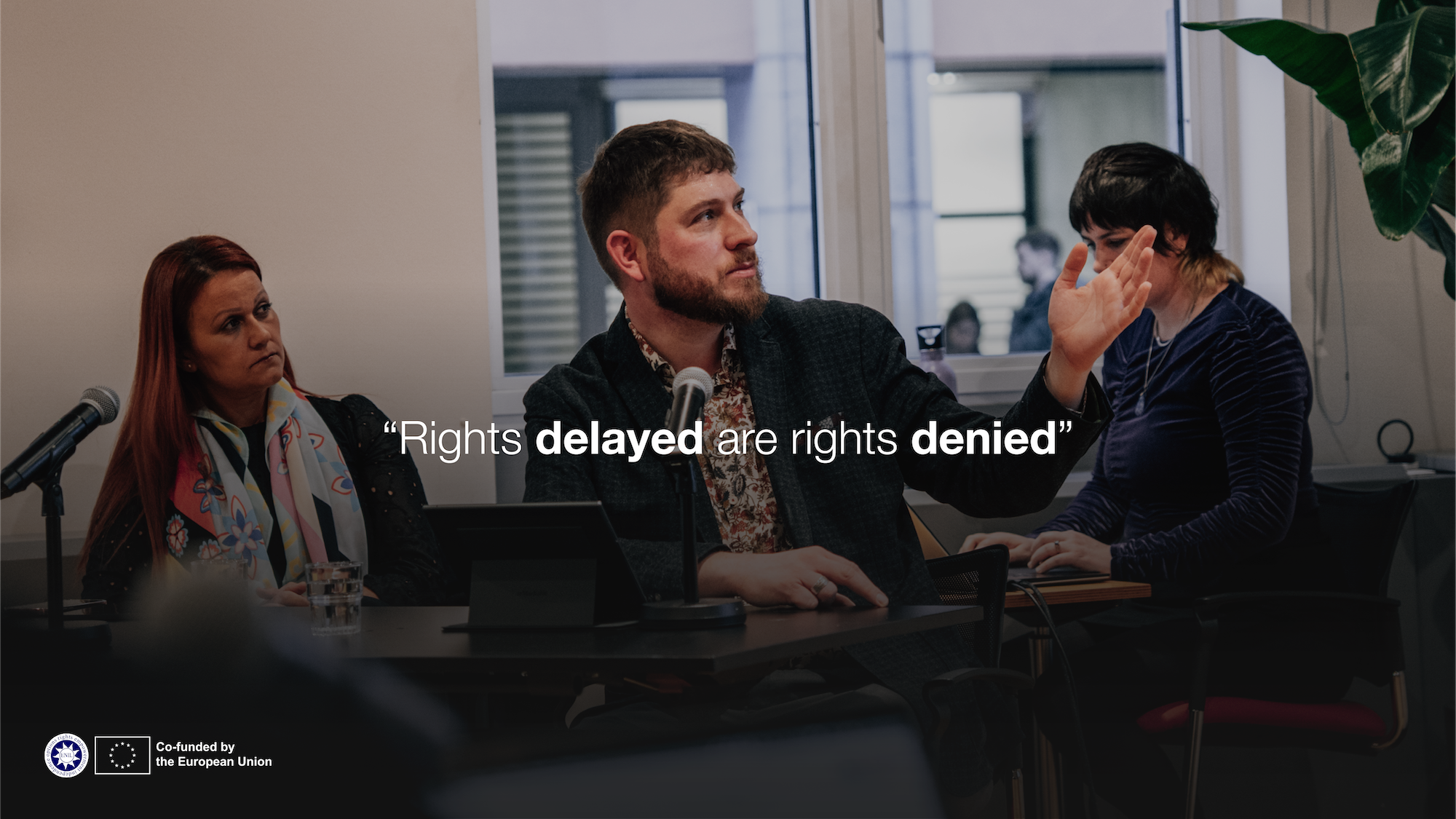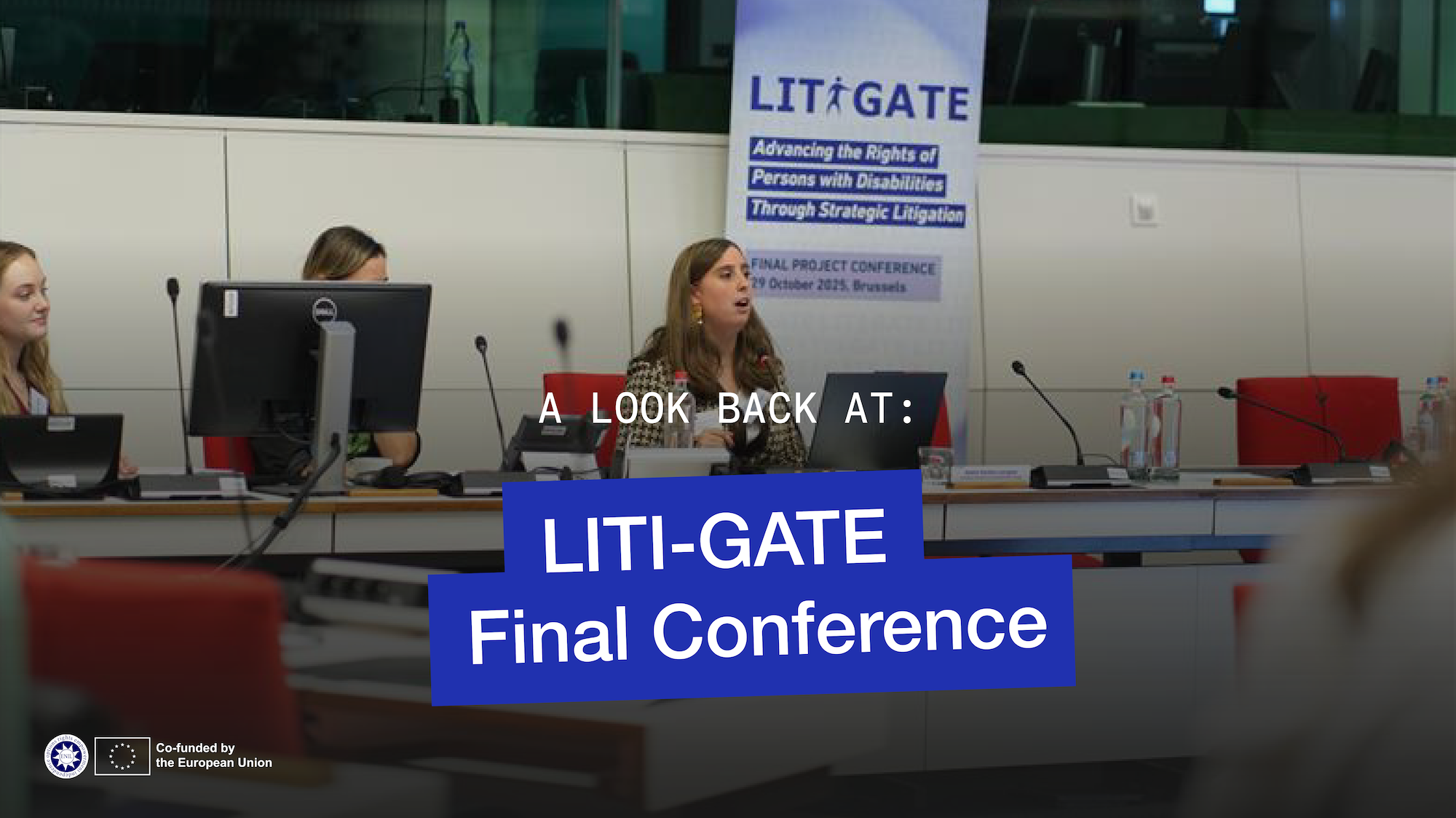In order to enable the choice and control of its users, a personal assistance scheme needs to ensure that:
- The users can choose their personal assistants. (+130)
- The assistants are protected by health and safety provisions. (+124)
- The appeal procedure [that enables the users to contest the outcome of the needs assessment] is straightforward, transparent and does not entail additional expenses for the user. (+123)
- The scheme is provided irrespective of family (including marital) situation. (+120)
- The users can keep their assistance when moving to another region or local authority within the country. (+120)
- The users of the scheme have the opportunity to appeal the outcome of their assessments. (+119)
- Under the scheme, the user determines the times when assistance will be provided, including during nights, weekends, holidays, etc. (+119)
- The scheme is underpinned by the Independent Living philosophy and/or the social model of disability. (+118)
- The users can dismiss their personal assistants. (+118)
- The provision of personal assistance under the scheme is recognised as a (human, civil, social) right. (+117)
These are the ten characteristics of personal assistance that received the highest scores (given in brackets) in a recent survey done by the European Network on Independent Living (ENIL). Participants were asked to assess 138 characteristics of personal assistance on a scale from +3 to -3, where +3 means that the characteristic enables choice and control to the maximum extent, whereas -3 means maximum hindrance. Cumulatively, 100 characteristics received positive scores, while 38 received negative ones. As far as the latter are concerned, the ten characteristics of a personal assistance scheme assessed by the participants in the study as most restrictive of choice and control are:
- The assistants are appointed by the provider, without the involvement of the user. (-125)
- Under the scheme, assistance is bound to a location (for example, it is provided only at the user’s home). (-124)
- The scheme deteriorates by incorporating measures that restrict the choice and control of the users. (-116)
- The scheme is limited by a ‘cost ceiling’ and users whose support costs more are directed towards traditional services (e.g., residential institutions). (-115)
- The scheme is used as an excuse for cutting expenses for ‘social care’. (-108)
- Policy makers and other stakeholders (e.g., the media) misunderstand, misuse or misrepresent the scheme. (-107)
- Assistants are not allowed to perform tasks related to health care (even after delegation or approval by medical professionals). (-103)
- Under the scheme, assistants work fixed hours (e.g., from 9:00 AM till 5:00 PM). (-99)
- The scheme is subjected to cuts (e.g., eligibility is tightened, ‘assistance hours’ are reduced, conditionality is introduced, etc.). (-97)
- There is a pre-defined list of tasks that the assistants can do. (-86)
The survey took place in the period 19 January – 4 March 2018 as part of the project ‘User-Led Personal Assistance in the European Union’, conducted by me (Teodor Mladenov) in the framework of a Marie Curie Individual Fellowship hosted by ENIL. The project looks at personal assistance in Europe from the perspective of the Independent Living philosophy, the social model of disability, and (critical) disability studies more generally.
The survey was administered online, using Google Forms as its platform. Information about it was distributed via email and ENIL’s newsletter, reaching 1968 addressees in total. This group consists of ENIL’s 683 individual and organisational members, plus 1295 subscribers of ENIL’s newsletter who are non-members. Since many independent living advocates in Europe are affiliated with ENIL as either members of subscribers of its newsletter, it is assumed that the population targeted by the survey represents the European Independent Living movement.
54 completed questionnaires were returned. Assistance users constituted a clear majority among respondents, with 35 people (65%) identifying themselves as ‘personal assistance users’, 15 (28%) self-identifying as ‘non-users’, and 4 (7%) preferring not to say. 52 respondents (96%) stated that they are ‘affiliated with an organisation active in the disability field’ and 34 (63%) defined their organisation as ‘led and controlled by personal assistance users’.
Participants came from a number of European countries, with a slight predominance of the United Kingdom and Southeastern Europe, and some gaps in Central Europe. Of the 48 respondents who revealed their countries of residence, one person reported Indonesia and 47 people reported 21 European countries: Armenia, Austria, Belgium (3 respondents), Bulgaria (4 respondents), Estonia, France (2 respondents), Greece (4 respondents), Hungary (4 respondents), Ireland, Italy, Luxembourg, Malta, Montenegro (2 respondents), Norway (3 respondents), Netherlands (2 respondents), Romania (2 respondents), Serbia (3 respondents), Spain, Sweden, Switzerland and United Kingdom (8 respondents).
The intention of the survey was consultative rather than explorative – I wanted to hear from assistance users and their allies in and around the Independent Living movement in Europe, rather than identify with statistical precision the perceptions of a specific group. That said, the results could be regarded as representative of the views of the target population, within certain limits (statistically speaking, the margin of error is 11% at a 90% confidence level, assuming random sampling). As far as the survey’s ‘validity’ and ‘reliability’ are concerned, the questionnaire was constructed after a literature review ad was ‘piloted’ with the kind assistance of colleagues at ENIL.
At the beginning of this article I provided a ‘teaser’ – a preliminary glimpse of some of the answers refracted by a simple accumulation of points. A more detailed and in-depth analysis of the survey results, offering additional reflections on ranking, interpretations of variance and spread of the answers, and discussion of the participants’ comments in response to the open-ended questions will be published soon and will be disseminated through ENIL’s newsletter. I will also make anonymised survey data available for anyone to make their own conclusions.
In addition, the results of the survey will be used to develop a checklist of weighted characteristics of personal assistance that will be used for evaluation of actually existing personal assistance schemes. It is hoped that such a tool would enable Independent Living advocates to monitor personal assistance and advocate for policy changes.
Last but not least, I would like to express my personal and ENIL’s collective gratitude to the people who responded to the survey. Thank you!
————————–
This project has received funding from the European Union’s Horizon 2020 research and innovation programme under the Marie Sklodowska-Curie grant agreement No 747027. This document reflects only the author’s view. The Research Executive Agency of the European Commission is not responsible for any use that may be made of the information it contains.
Teodor Mladenov, 28 March 2018


